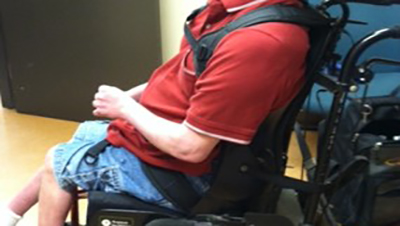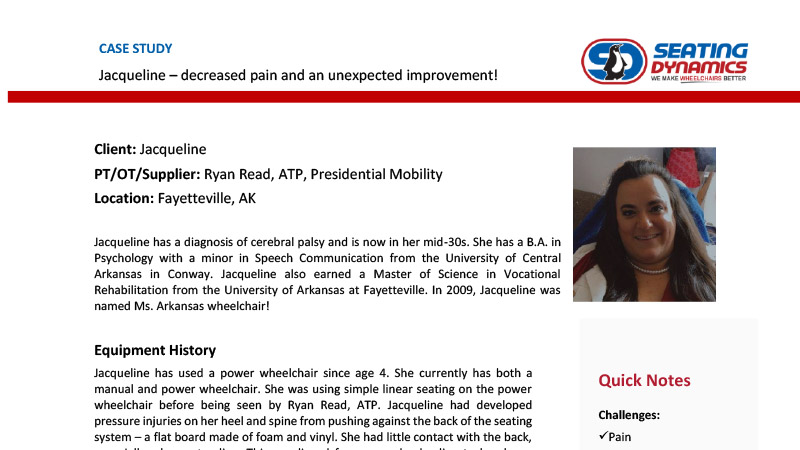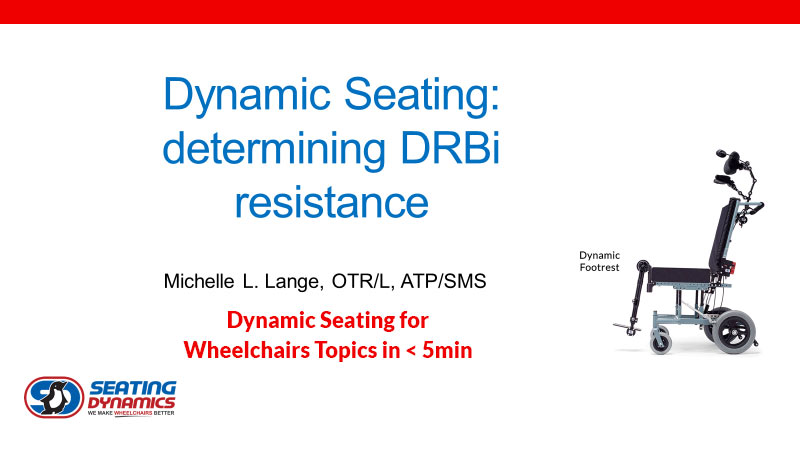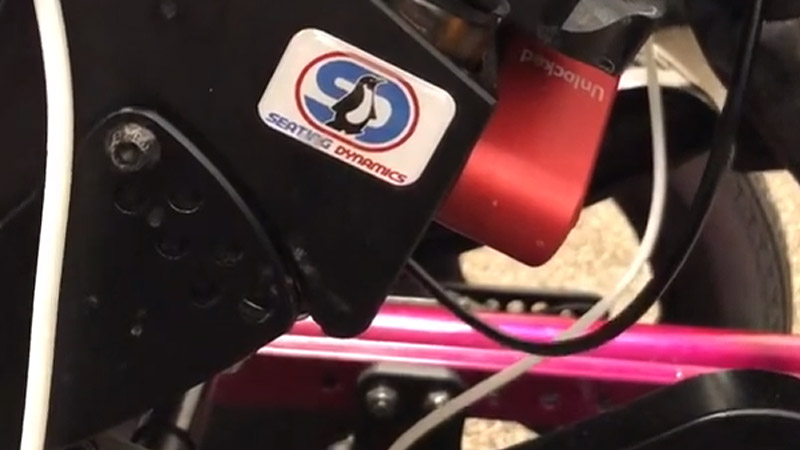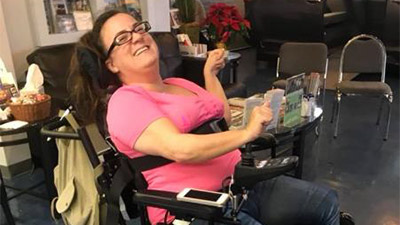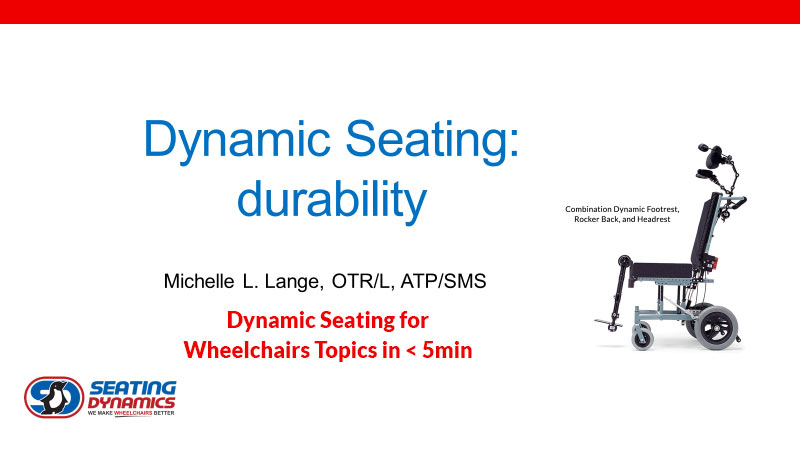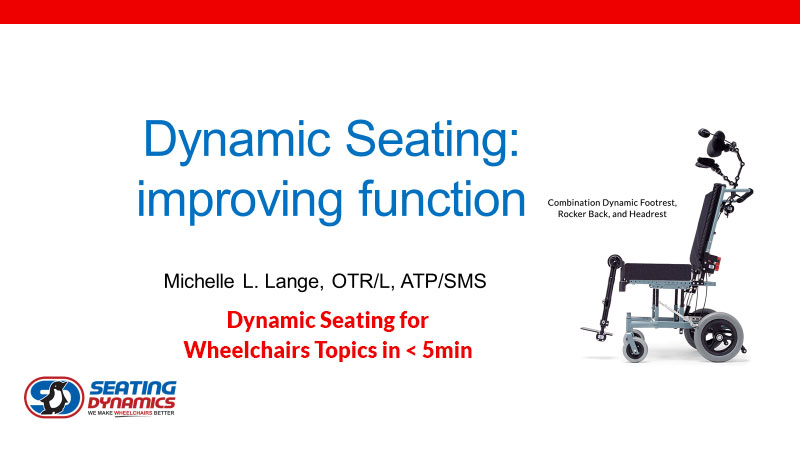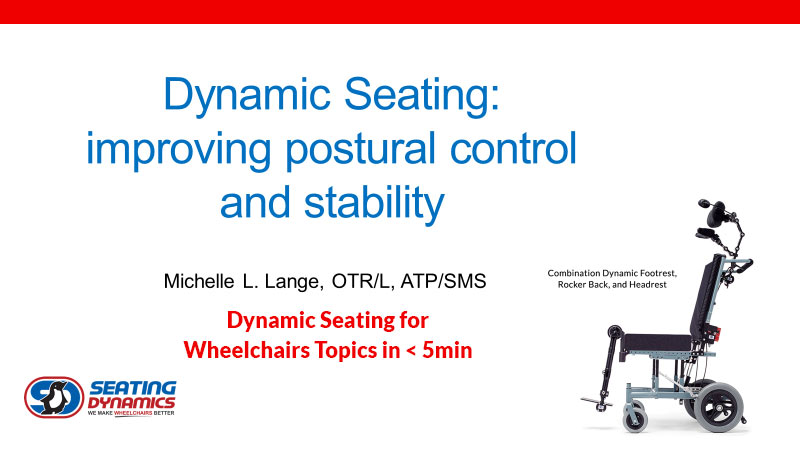Oliver Demonstrating Need for a Dynamic Back
Oliver is using the Dynamic Back on his Rifton Activity Chair in this video and loving it! As this was so successful for him, his team ordered a Seating Dynamics Dynamic Rocker Back interface on his new manual wheelchair.
Dynamic Seating and the Restraint Debate
There are times when a wheelchair seating and mobility team, after careful evaluation and problem-solving, makes specific recommendations – only to hear that these well thought out interventions may be considered to be a restraint. So just what is considered a restraint and how does this affect Dynamic Seating?
Phillip – Before and After Dynamic Seating
On the left, Phillip had rocked so much in his static wheelchair that the frame was worn to the point of allowing excessive movement. On the right, he is enjoying the smooth rocking movement of the Seating Dynamics Dynamic Rocker Back interface which allows him to move and maintains frame integrity.
Jacqueline – Decreased Pain and An Unexpected Improvement
Jacqueline has a diagnosis of cerebral palsy and is now in her mid-30s. She has a B.A. in Psychology with a minor in Speech Communication from the University of Central Arkansas in Conway.
Quick Class: Dynamic Seating – Resistance DRBI Back
The optimal level of resistance is critical to the functioning of a Dynamic Back. In this Quick Class, we will review how to determine if the resistance is too firm, too soft, or just right.
Seating Dynamics Close Up Dynamic Rocker Back In Movement
In this video, you will see the DRBi elastomer absorbing and diffusing force as the client rocks at the hips.
Quick Class: Dynamic Seating – Durability
Dynamic Seating is often used to prevent equipment breakage, specifically the wheelchair frame and seating system. The Dynamic components absorb strong, repeated, sudden, and/or sustained forces, hence protecting vulnerable areas of the seating and mobility base. But what about the Dynamic Components themselves? Just how durable are these?
Quick Class: Dynamic Seating – Improving Function
Dynamic Seating can improve function, including medical functioning. This Quick Class reviews specifics supported by research.
Quick Class: Dynamic Seating – Improving Postural Control and Stability
Dynamic seating provides resistance to movement initiated by the wheelchair user, usually through spring or elastomer type mechanisms or other resistive, but mobile components. Movement against resistance has been demonstrated to increase strength in people with increased muscle tone without an increase in spasticity. Increased muscle strength can, in turn, improve both postural control and functioning.


